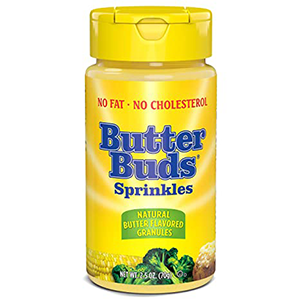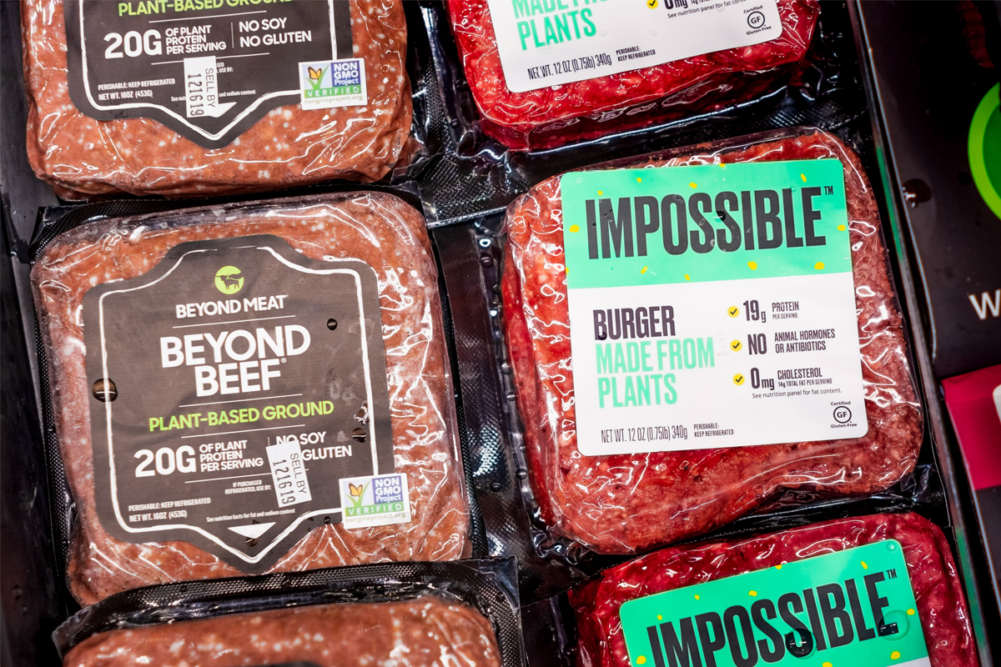KANSAS CITY — The plant-based meat alternatives category has hit a speed bump. Repeat purchases are down. A category review by Maple Leaf Foods, Toronto, showed the category had “stalled.” Beyond Meat, El Segundo, Calif., recorded a loss of $182 million in the year ended Dec. 31, 2021.
To reignite sales growth, ingredient formulations could address flavor, texture and shelf-life concerns, especially for products aimed at “flexitarians,” meaning consumers who reduce meat consumption but do not avoid meat entirely. Plant proteins, ingredients that mask off-flavors and oils that address shelf-life issues may be options.
Research from Ingredion, Inc., Westchester, Ill., revealed 82% of consumers who eat meat alternatives also eat conventional meat on a weekly basis. When asked what factors they considered when selecting meat alternative brands, 65% said taste, the top answer, which was followed by 48% for clean label/recognizable ingredients, 47% for texture and 47% for protein content. Ingredion also found 75% of consumers said they were most likely to seek and pay more for plant-based meat alternatives that offer the indulgent taste and conveniences of “an experience similar to restaurants” along with added health benefits.
“At times, plant-based proteins may impart earthy, beany notes or a certain level of bitterness that can detract from the intended flavor experience of the meat alternative product,” said Megan Priest, senior technologist, technical services western region for Ingredion. “The earthy flavors can be mitigated by formulating with ingredients that deliver milder, cleaner flavor profiles. For example, Ingredion’s ultra-performance proteins can help brands to create plant-based food and beverages without the raw plant flavor, bitter taste or uncontrolled microbial levels inherent in dry-milled pulse products.”
Check out these new ingredients
New ingredients created for meat alternatives keep popping up.
CP Kelco, Atlanta, this year unveiled a new portfolio of ingredients created to support product development in plant-based meat alternatives. Kelcogel MA-60 gellan gum, made by fermentation, acts as an alternative to methylcellulose, adding bite and texture, according to CP Kelco. Genu Pectin MA-50, made from upcycled spent citrus peel, may be used in combination with Kelcogel MA-60 gellan gum or another gelling agent to add juiciness.
Genu Texturizer MA-1, a blend of carrageenan and methylcellulose, provides juicy texture along with both hot and cold bite, according to the company. Nutrava citrus fiber, made from citrus peel, has been shown to replace starch in plant-based meat alternatives.
Geneva-based Givaudan this year launched PrimeLock+, a vegan-friendly system that mimics animal fat cells. PrimeLock+ encapsulates, protects and locks in flavor and fat in plant-based meat alternatives like burgers, sausages and meatballs.

A new plant protein should become available commercially in October. CK Ingredients, Oakville, Ont., that month plans to launch FabaFuel to the business-to-business market in North America, said Colleen Madden, vice president of innovation. The de-flavored plant protein is 64% protein and sourced from Canadian snowbird fava beans. FabaFuel, a fine powder, has a neutral aroma, a light off-white color and is 12% fiber. It scored 0.75 on the protein digestibility corrected amino acid score (PDCAAS).
The new protein’s gelling properties and water-holding properties make it a good option for plant-based meat and poultry alternatives as well as dairy alternatives, batters/breadings, baked foods, extruded snacks, and powdered beverages, according to the company.
“Non-de-flavored fava beans can have beany notes or off-flavors, but ours is very creamy and mild,” Ms. Madden said.
Masking unwanted flavors
Other ingredients mask off-flavors.

Butter Buds non-dairy buds help in masking off-notes and achieving the fatty notes, richness and savory enhancements associated with butter, said Lisa Spurlock, food scientist for Butter Buds, Inc., Racine, Wis.
“Non-Dairy Buds Asia can move a vegan patty to a buttery patty while enhancing richness, rounding the flavor profile and masking off notes,” she said. “Non-Dairy Buds Cheddar also adds richness, masks off-notes and boosts savory notes. For a meaty flavor impact Butter Buds Bacon can be added.”
Florida Food Products, Eustis, Fla., offers fermented mushroom, mirepoix and rice bran extract to help address off-taste issues, said Jenna Callahan, marketing coordinator.
“The use of these ingredients eliminates the need for things like nucleotides, AYE (autolyzed yeast extract) and MSG (monosodium glutamate) while also creating a more authentic flavor of the plant-based meat alternative,” she said.
Amr Shaheed, technical service manager, food applications for Innophos, Cranbury, NJ, said flavor profiles may be addressed through taste-modulating ingredients, marinades, seasonings and glazes, meat and smoke flavors, and yeast-based systems that enhance savory flavors.
Texture and shelf life are two other areas where meat alternatives may be lacking.
ADM’s plant protein library consists of over 30 diverse sources across pea, soy, wheat, rice, ancient grains, beans, pulses, nuts and seeds portfolios, said Ken Kraut, chief global flavorist of savory. The Chicago-based company recently launched AccelFlex systems that help address texture, structure and functional challenges through extruded plant protein products.
“For example, we combine our pea and chickpea or pea and navy bean proteins to provide outstanding textured pieces for seafood, burger and sausage analogs,” he said. “We also help create consumer-preferred ‘bite’ and ‘chew’ in formed and shredded plant-based meats with our differentiated fibrous soy protein.”
Shelf-life concerns
In many cases the plant-based protein is hydrated with an oil, said Michael Cropp, technical services associate for Kemin Industries, Des Moines, Iowa.
“The oils are plant-based as well, which means the lipid profile is mostly unsaturated,” he said. “Unsaturated fatty acids are at a higher risk for oxidation. Kemin can help manufacturers tackle the challenge of oxidation with our antioxidant and plant-based alternatives.”
Vegetable fats and oils account for up to 25% of the total fat content in plant-based meat alternatives, said Andrea Weis, a scientist for AAK USA, Inc., Edison, NJ.
“Depending on the exact plant source, vegetable fats and oils contain many of the same fatty acids that are present in animal fats, but in varying concentrations,” she said. “At AAK, we have the ability to combine different plant sources and fat fractions in order to dial in a fatty acid profile that more closely resembles that of a certain type of animal fat.”
Formulators should consider moisture, salt content, pH and potential outgrowth covering shelf life and food safety, said Peter Sijtsema, business development manager for Corbion and based in Gorinchem, The Netherlands. Plant-based products tend to have a higher pH compared to conventional meat. Each source of protein has a different pH and buffering capacity.
“We have encountered many plant-based products that contain several plant protein sources, which results in the variability of pH in final application that will affect the shelf life of the final product,” he said. “Corbion is able to provide the right solution that is needed to ensure shelf life and food safety of these plant-based proteins.”

